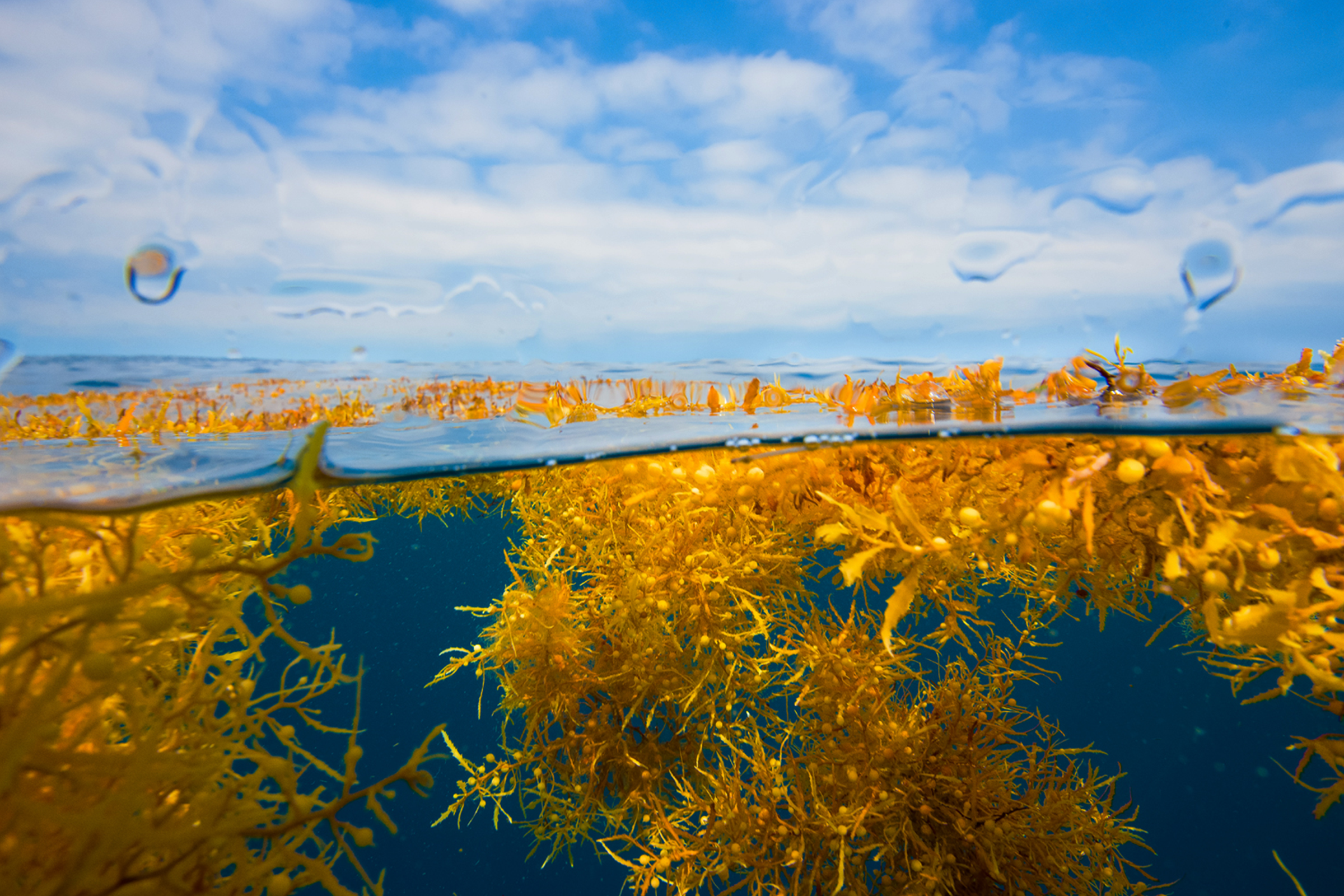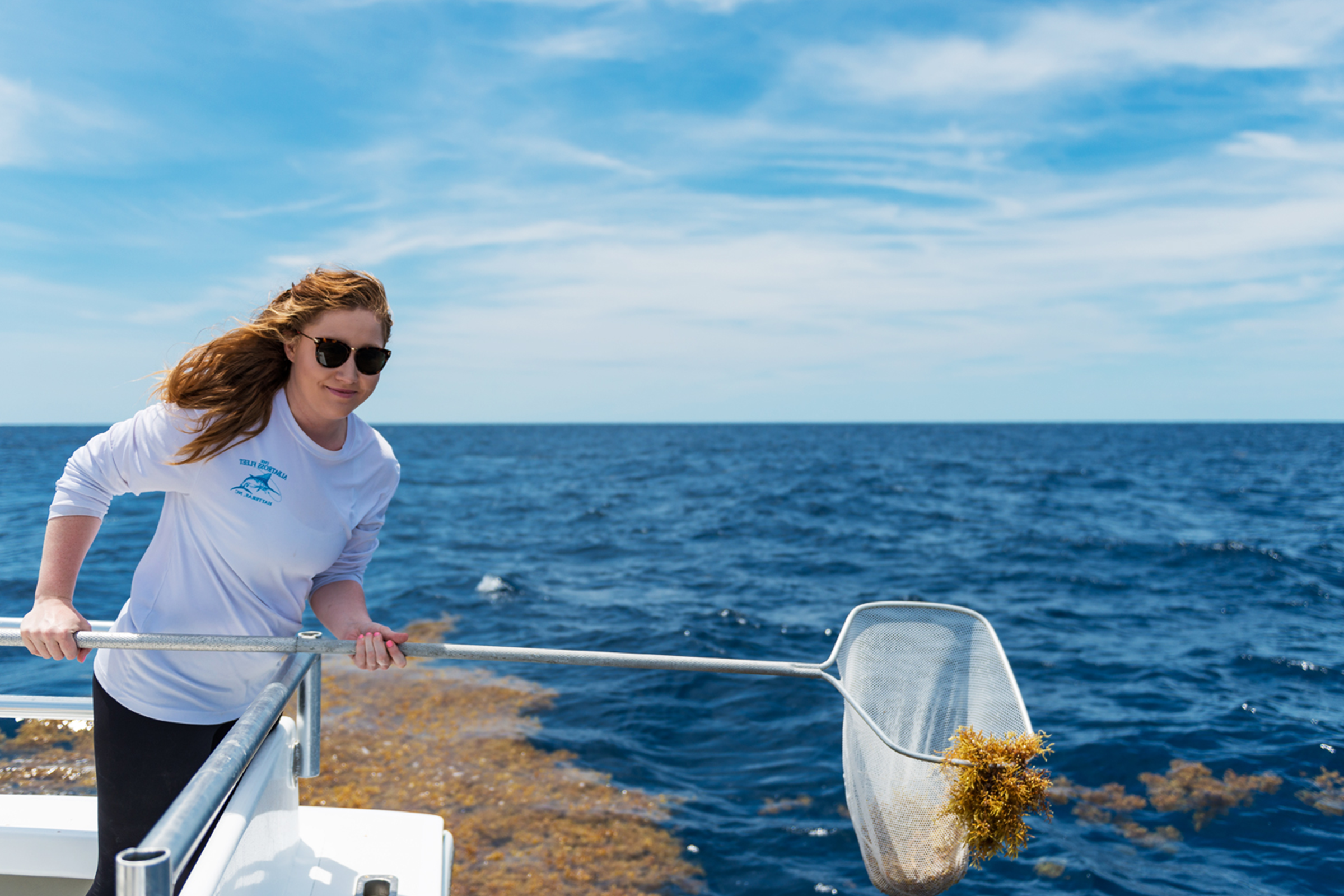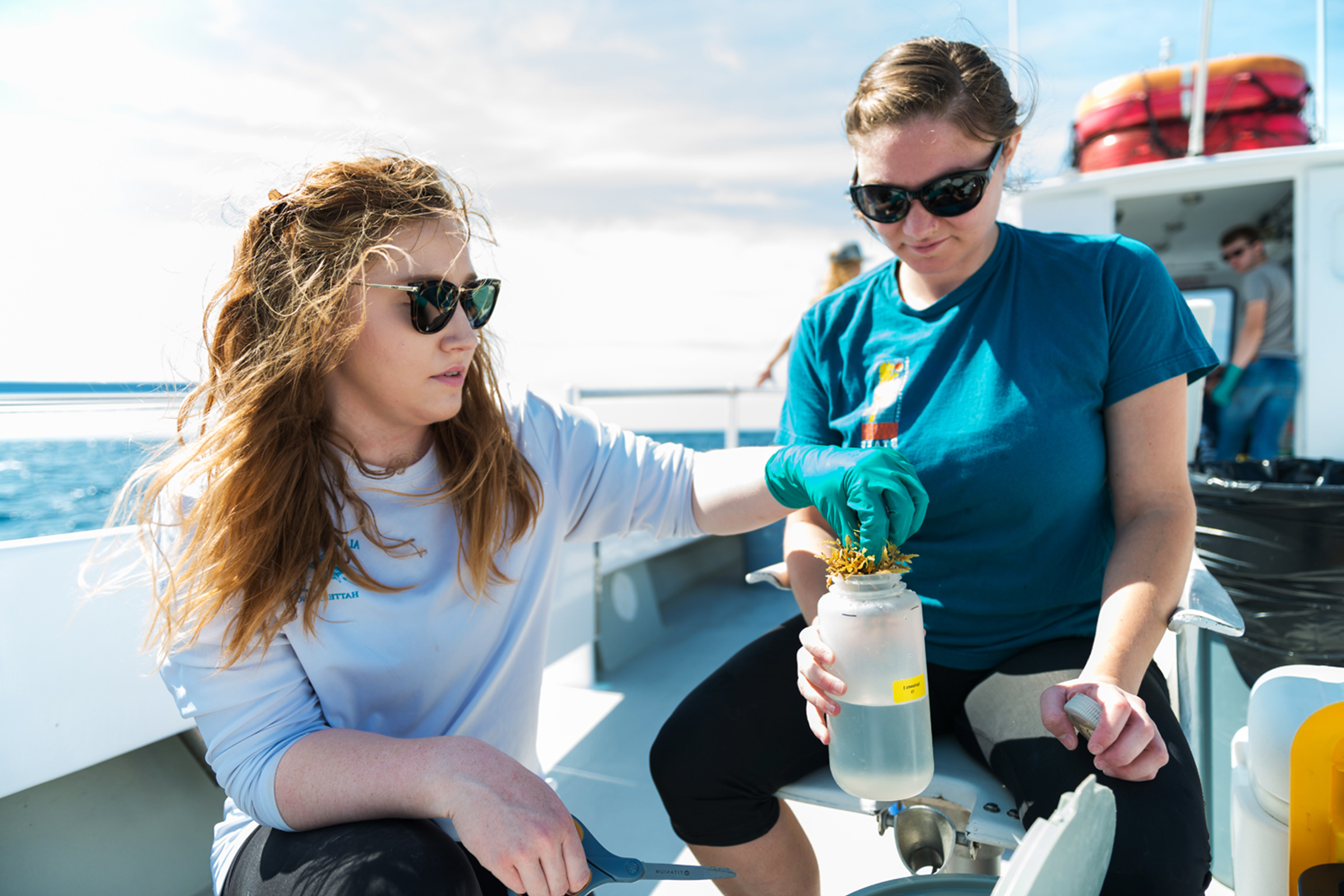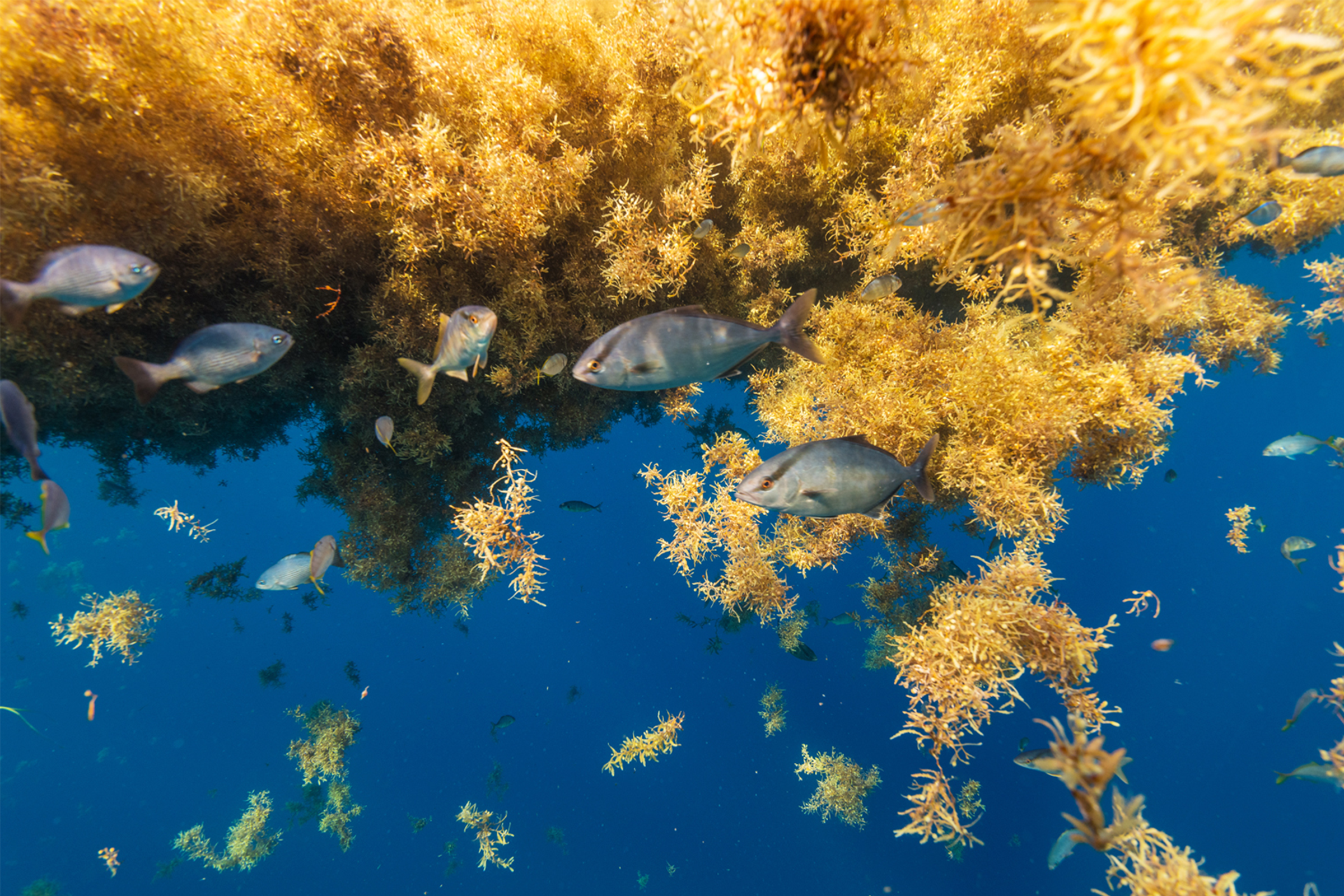Claire Johnson is a doctoral student in the 文理学院’ earth, marine and environmental sciences department and a graduate re太阳城娱乐城 assistant at the 海岸研究学院. 在这个第一人称的叙述中, Johnson describes a boat trip to collect sargassum seaweed to study in the lab. The work helps scientists better understand the nitrogen cycle, which is vital to the air we breathe and the food we eat.
My goal is to investigate the biological cycling of nutrients — specifically nitrogen — by the microbial community living on the surface of sargassum and to understand how specific environmental variables alter this process. 为了研究这个, we wait for the Gulf Stream to present perfect conditions: high visibility, 风平浪静. And then we adventure out into the open ocean to catch the sargassum that floats along its currents.
我把闹钟定在凌晨4:15.m. so that I can get to the lab in time to fill the sample coolers with ice and strap down the dozens of buckets in the truck bed so that we can get to the dock in Hatteras. 到7点.m., we’re aboard the Albatross III, embarking on an hours-long journey through the choppy waters of Hatteras Inlet. Depending on the position of the Gulf Stream, it can take us anywhere from one to two hours to reach its western edge and, 如果我们幸运的话, 我们会看到马尾藻.



